Fires Continue to Burn in Southern California: A Region in Crisis
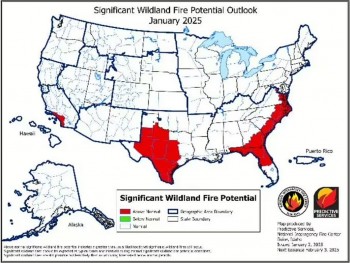 Wildfire Prediction: Full List of Danger Zones Across the U.S. from January to April 2025 Wildfire Prediction: Full List of Danger Zones Across the U.S. from January to April 2025 |
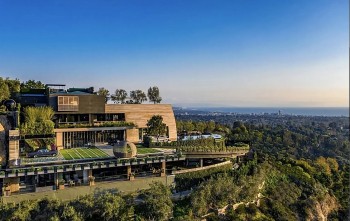 $125M Megamansion Burned Down in LA Wildfires: Most Expensive Home, HBO's "Succession" $125M Megamansion Burned Down in LA Wildfires: Most Expensive Home, HBO's "Succession" |
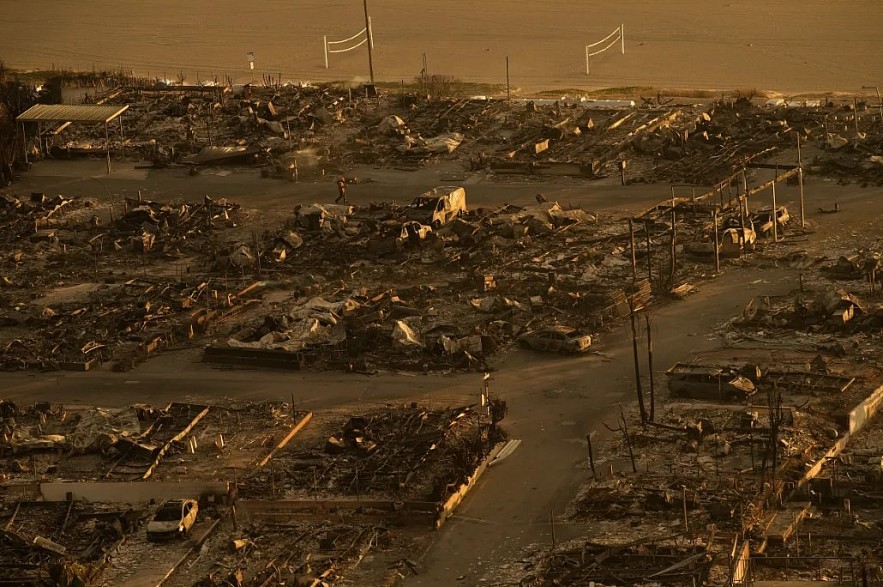 |
| The neighborhood destroyed by the Palisades Fire on Friday, Jan. 10, 2025, in the Pacific Palisades section of Los Angeles |
As of mid-January 2025, the ongoing fires have claimed at least 11 lives, burned tens of thousands of acres, and destroyed more than 10,000 structures. Among these, the Eaton Fire and the Palisades Fire have emerged as two of the most destructive wildfires in Los Angeles’ history.
The Eaton Fire: A Community Confronts Loss
The Eaton Fire began earlier this week in Altadena, just north of Pasadena. Over four days, it has scorched more than 14,000 acres, destroying more than 7,000 homes and properties. Firefighters have struggled to contain the blaze, with containment reaching only 15% as of Saturday. However, some evacuation orders were lifted on Friday, allowing residents to return and confront the reality of what they have lost.
Bridget Berg, whose Altadena home of 16 years was consumed by the flames, described the heartbreaking experience of watching the fire in real time. “It’s not like we just lost our house — everybody lost their house,” she reflected. Berg, like many others, returned to sift through the charred remains of her home, finding little left beyond rubble.
Similarly, Ana Yaeger, a resident of Pasadena, described the shock of seeing her neighborhood reduced to "just dust." Her hesitation to return was compounded by the knowledge that fires continue to burn dangerously close, threatening the area further.
The Palisades Fire: An Unprecedented Disaster
Even more catastrophic is the Palisades Fire, which has burned over 21,500 acres and continues to spread. Late Friday, the fire expanded eastward, triggering new evacuation orders for Brentwood and parts of Encino. Entire communities have been forced to flee as firefighters work around the clock to protect homes and infrastructure.
The combined destruction of the Eaton and Palisades fires has cemented their place among the most destructive and costliest wildfires in Los Angeles history. Together, these fires have displaced over 100,000 residents, leaving communities reeling from the losses.
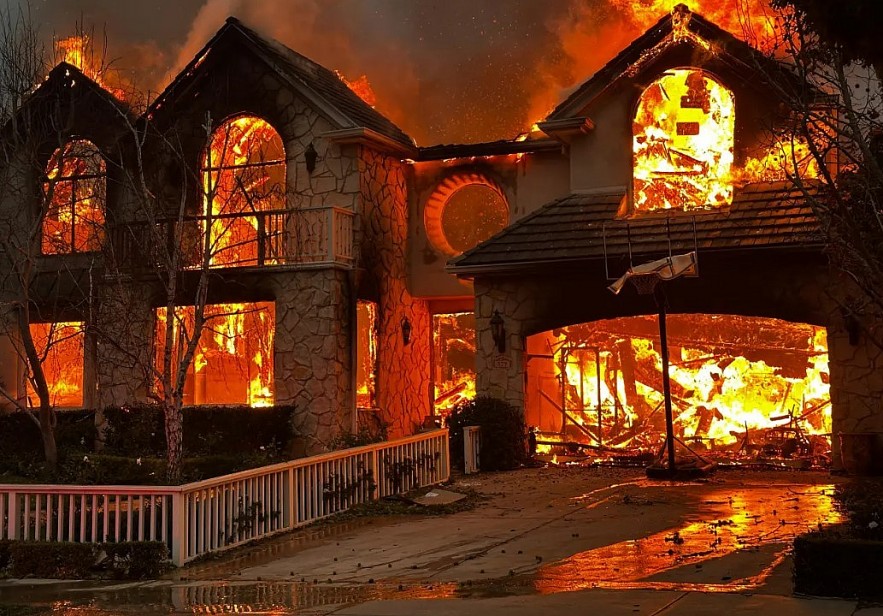 |
| Fires continue to burn in Southern California |
Challenges in Fighting the Flames
Efforts to combat the fires have been met with numerous challenges, exposing critical vulnerabilities in the region’s emergency response systems:
Water Shortages: Firefighters were hampered by a lack of water when the Santa Ynez Reservoir, a critical water source with a capacity of 117 million gallons, was found empty. The reservoir was undergoing repairs, and the Los Angeles Fire Department (LAFD) was not alerted to its shutdown in advance. Many fire hydrants ran dry as a result, significantly slowing efforts to battle the flames.
Budget Cuts: Recent budget cuts to the LAFD, totaling $17.6 million, have further strained firefighting resources. Chief Kristin Crowley publicly criticized the city’s decision, stating, “My message is the fire department needs to be properly funded. It’s not.”
Climate Conditions: The fires were fueled by extreme drought conditions, strong Santa Ana winds, and dry vegetation, creating a tinderbox environment. Climate change has amplified these conditions, making wildfires more frequent and severe.
The Human and Economic Toll
The impact of these wildfires extends far beyond the immediate destruction. As of Saturday, more than 100,000 residents remain under mandatory evacuation orders. Emergency shelters are operating at capacity, while many evacuees struggle to find temporary housing.
The economic cost is staggering, with insured losses estimated at over $20 billion and total damages potentially exceeding $50 billion. This makes the 2025 Southern California wildfires one of the costliest natural disasters in U.S. history.
The emotional toll is equally profound. Families who have returned to their neighborhoods describe the overwhelming sense of loss, with entire streets reduced to rubble. For many, rebuilding their homes and lives will be a long and arduous process.
A Community United in Resilience
Despite the devastation, Southern California’s communities have come together to support one another. Celebrities such as Prince Harry and Meghan Markle have been seen distributing food and supplies to evacuees. Australian influencer Chloe Fisher has launched a fundraiser to aid affected families, raising significant funds for both human relief efforts and wildlife rescue organizations.
Meanwhile, firefighters continue their tireless efforts on the front lines, aided by support from international teams. Mexico has sent firefighters to assist in the battle, showcasing the solidarity of global communities in times of crisis.
Investigations and Accountability
Authorities are investigating the causes of the fires, which ignited within a densely populated 25-mile swath north of downtown Los Angeles. While no evidence of arson has been confirmed, questions are being raised about the region’s preparedness and response.
Governor Gavin Newsom has ordered an investigation into the Santa Ynez Reservoir shutdown, calling the situation “deeply troubling.” Mayor Karen Bass, who has faced backlash for her handling of the crisis, has pledged to address the systemic issues that hampered firefighting efforts.
Lessons for the Future
The ongoing fires in Southern California underscore the urgent need for action on multiple fronts:
-
Infrastructure Improvements: Investments in firefighting resources, water infrastructure, and emergency systems are essential to improve response capabilities.
-
Climate Action: Addressing the root causes of climate change is critical to reducing the frequency and severity of wildfires.
-
Urban Planning: Stricter regulations are needed for construction in fire-prone areas, including the use of fire-resistant materials and designs.
-
Public Awareness: Education campaigns can help communities prepare for and respond to wildfire threats, potentially saving lives and property.
Conclusion
Southern California’s wildfire crisis is a stark reminder of the growing threats posed by climate change, urban development, and resource mismanagement. As residents begin the long process of recovery, the focus must shift to addressing the systemic issues that have exacerbated this disaster. With resilience, solidarity, and decisive action, the region can rebuild and prepare for a safer future.
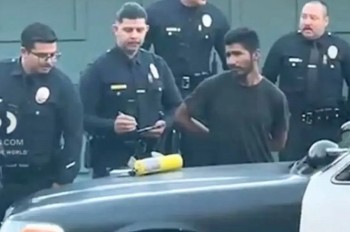 Who is the Suspected Arsonist in the LA Wildfires: A Homeless Man Who is the Suspected Arsonist in the LA Wildfires: A Homeless Man A suspect has been taken into custody in connection with the Kenneth Fire, which broke out on Thursday afternoon in Los Angeles' West Hills. The ... |
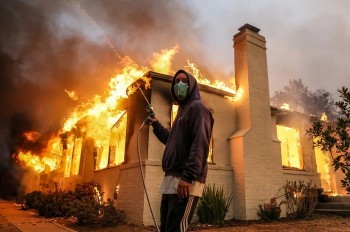 What are the Causes of the California Wildfires Amidst an Arrest for Arson What are the Causes of the California Wildfires Amidst an Arrest for Arson We delves into the possible causes of California fires, the arrest's implications, and insights from experts and authorities. |
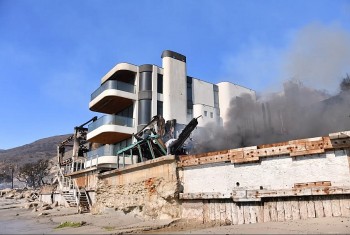 Why Did a Malibu Mansion Miraculously Survive the Los Angeles Wildfire? Why Did a Malibu Mansion Miraculously Survive the Los Angeles Wildfire? As wildfires raged through Los Angeles County, destroying thousands of homes and leaving neighborhoods in ashes, one Malibu mansion stood miraculously untouched amidst the devastation. |
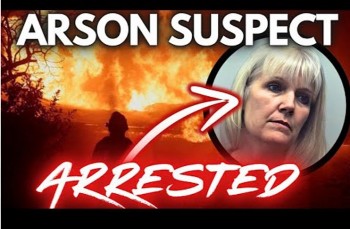 Who Is Gloria Lynn Mandich? the Second Suspected Arsonist in Los Angeles Wildfires Who Is Gloria Lynn Mandich? the Second Suspected Arsonist in Los Angeles Wildfires In relation to the arson case, California State Parks has reported that they have detained Gloria Lynn Mandich, the suspect in the wildfire that has ... |


























